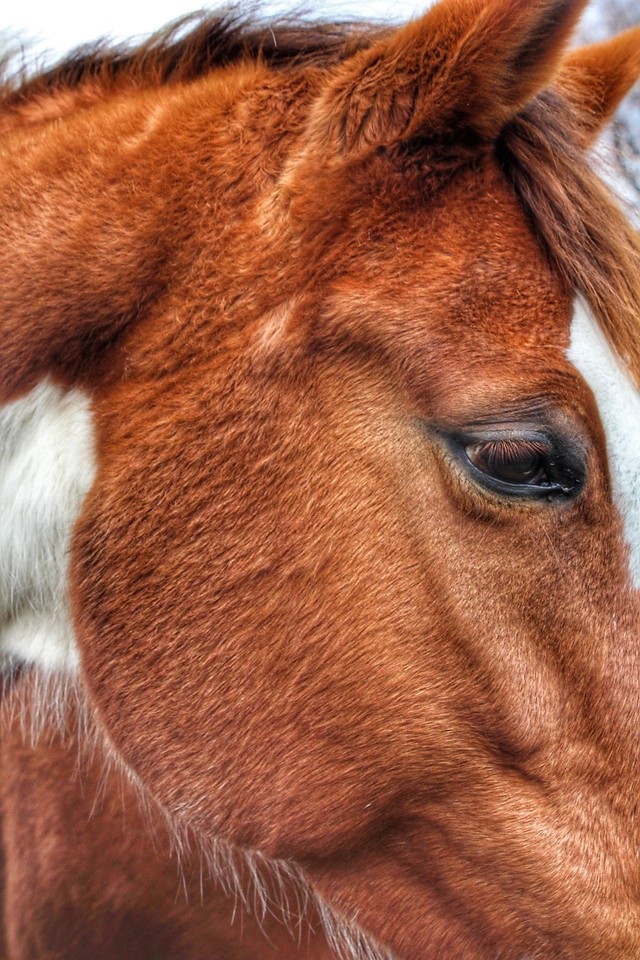
BLOG
Let's Talk Boundaries: Part 2
Welcome to Part 2 of Let’s Talk Boundaries. Before we dive into WHY a lack of boundaries typically exists, I wanted to do a quick recap of Part 1:
Perhaps one of the most important aspects of building a harmonious relationship with your horse, boundaries create a safe space for both horse and human to exist together. Traditionally, we are taught to set rigid, unchanging boundaries and to mindlessly enforce them anytime your horse encroaches upon one. This is the mindset of many horse people, from the time they are young, because we are told that if we don’t do this, “the horse will hurt us.” We are told that if we don’t have complete and utter control of the horse’s feet and body at all times, we are in imminent danger. “Horses are herd animals,” they say, “and you must be the alpha mare and demand respect.” I lived this way with horses for many years. I will say that it’s effective. Your horse will learn to stay out of your space and he will tiptoe around you to be sure he doesn’t “cross the line.” While this keeps you safe, it doesn’t leave room for authentic connection and relationship. It creates obedience and blind rule-following.
So now let’s get right into Part 2!
In this blog, we are going to talk about WHY a lack of boundaries typically exists. In Part 1, I asked you to do an exercise in which you discovered whether your horse respects your boundaries, and more importantly if you respect your horse’s. What did you discover? I am not of the belief that horses are malicious, dominant creatures out to try and one-up you or steal the show. I don’t think they wake up in the morning thinking about how they can overthrow you to achieve herd leadership.
My belief: When a horse consistently crosses through your boundaries, it’s because the boundaries aren’t clear to your horse. That may seem like a “duh” statement, but I wanted to make sure we got that part out of the way first. So now, let’s get to the WHY.
Why aren’t your boundaries clear to your horse?
If you’ve been to a clinic of mine or have worked with me in any capacity, you have most likely heard me talk about this concept of mindfulness. This isn't a new concept by any means, but it can be an interesting idea to bring into horse training for a lot of people. First, let’s look at the basic definition:
mindfulness (noun)
a mental state achieved by focusing one's awareness on the present moment, while calmly acknowledging and accepting one's feelings, thoughts, and bodily sensations
Let’s look at an example of what a lack of mindfulness looks like when you’re with your horse:
You show up at the barn and you’re a bit anxious and out of it because traffic was horrible. You’re thinking about how horribly your 1:30 PM meeting today went, and you know you need to hurry because your family is expecting you home by 6:45 PM. As you’re thinking all of this, you simultaneously walk to your horse’s stall, put his halter on, and get him in the crossties. You’re brushing him. He’s pawing and tossing his head. You’re still thinking about that afternoon meeting that didn’t go as you’d planned. He’s tossing his head some more. You walk in front of him to go to the other side and BAM! He slams the side of your face with his nose. Suddenly, you’re brought back into the present moment as you lift your hand and WHACK him on the neck. He stops tossing his head and pawing his leg. You resume grooming. You start thinking about what you need to do when you get home. You’re making a to-do list in your head for things that you can’t possibly do right now. Your horse is dancing in the crossties now, but you’re back to thinking about how awful that traffic was on your drive from work. You walk behind him to change sides and BAM! His left hip pushes into you as he pivots to look at his friend down the aisle. You’re brought back into the present moment as you lift your hand and WHACK him on the hip. “How rude!” you think to yourself. “How dare he push into me like that?!” But you resume grooming him, tack him up and get on.
It’s after the ride now and you’re standing in the aisle with him while you’re talking to your friend. Your friend is telling you about what her husband did yesterday and you’re commiserating at how annoying that is. All this time your horse is rummaging through the pockets of your jacket with his nose. Your friend asks you about work. You start to go off about how awful that 1:30 PM meeting went. Your horse is rummaging at your jacket again, but you’re really into this story so you reach into the pocket and hand him the cookie he smells. You keep telling your friend all about this meeting (the one that happened 4 hours ago), and your horse starts nuzzling at the pocket again. You don’t realize it because you’re really into this story. All of a sudden, you’re brought back to the present moment as your horse’s teeth grab your jacket and yank you to the right. You reach up and WHACK him on the nose and then back him up 10’ down the barn aisle all while yelling about how rude he is and “how dare you bite me?!”
Does this sound like anything you’ve experienced?
How a lack of mindfulness creates a lack of consistency
In the aforementioned example, we see the horse exhibit many “lack of boundary” behaviors:
Hitting your face with his nose
Hitting your body with his hip
Pushing against your body with his nose
Biting you with his teeth
In conjunction with these “lack of boundary” behaviors, we see you exhibit a lot of “lack of consistency” behaviors:
Allowing pawing and head tossing and then suddenly correcting it
Allowing the horse to dance around and move into space and then suddenly correcting it
Allowing the horse to “rummage” and play with the pocket, rewarding this behavior by giving him a cookie and then suddenly correcting it
In this example, the horse doesn’t actually know what is “allowed” and what is not. Why? Because the human doesn’t consistently correct the behavior. The human is too caught up in the happenings of the day to be a consistent, fair, dependable leader.
When you lack mindfulness, you are unable to be aware of what’s happening in the present moment.
When you lack mindfulness, you are unable to be aware of and control your emotions.
When you lack mindfulness, you are unable to be aware of what your horse needs from you.
So that’s why a lack of boundaries exist in a lot of horse-human relationships. It’s because the human is not being clear. We get so caught up in our day-to-day lives that we miss out on obvious behavioral “issues” in our horses and they end up snowballing into bigger problems, bad habits and “vices.” In Part 3, we’re going to talk about how to to change this! We will talk about how mindfulness can help you control your emotions so that you never correct your horse with any negative energy (i.e. anger, frustration). The relationship you have with your horse will undoubtedly improve as communication gets clearer and more consistent.
For now, you can start to try and be more aware of how often you get wrapped up in your thoughts. If you’d like to start meditating, I recommend the Headspace app or 10% Happier. Both of these have been extremely influential in helping me become a better, kinder and more consistent leader for my horses! Stay tuned for Part 3…
Jess Roberts, owner and trainer of Harmonized Horsemanship, is a Colorado horse trainer and equine behaviorist based out of Franktown specializing in the horse and human connection. Through liberty work, intuitive communication, and respectful horsemanship, Jess creates a deeper connection that results in a willing and happy equine partner. Learn more about her approach here.




